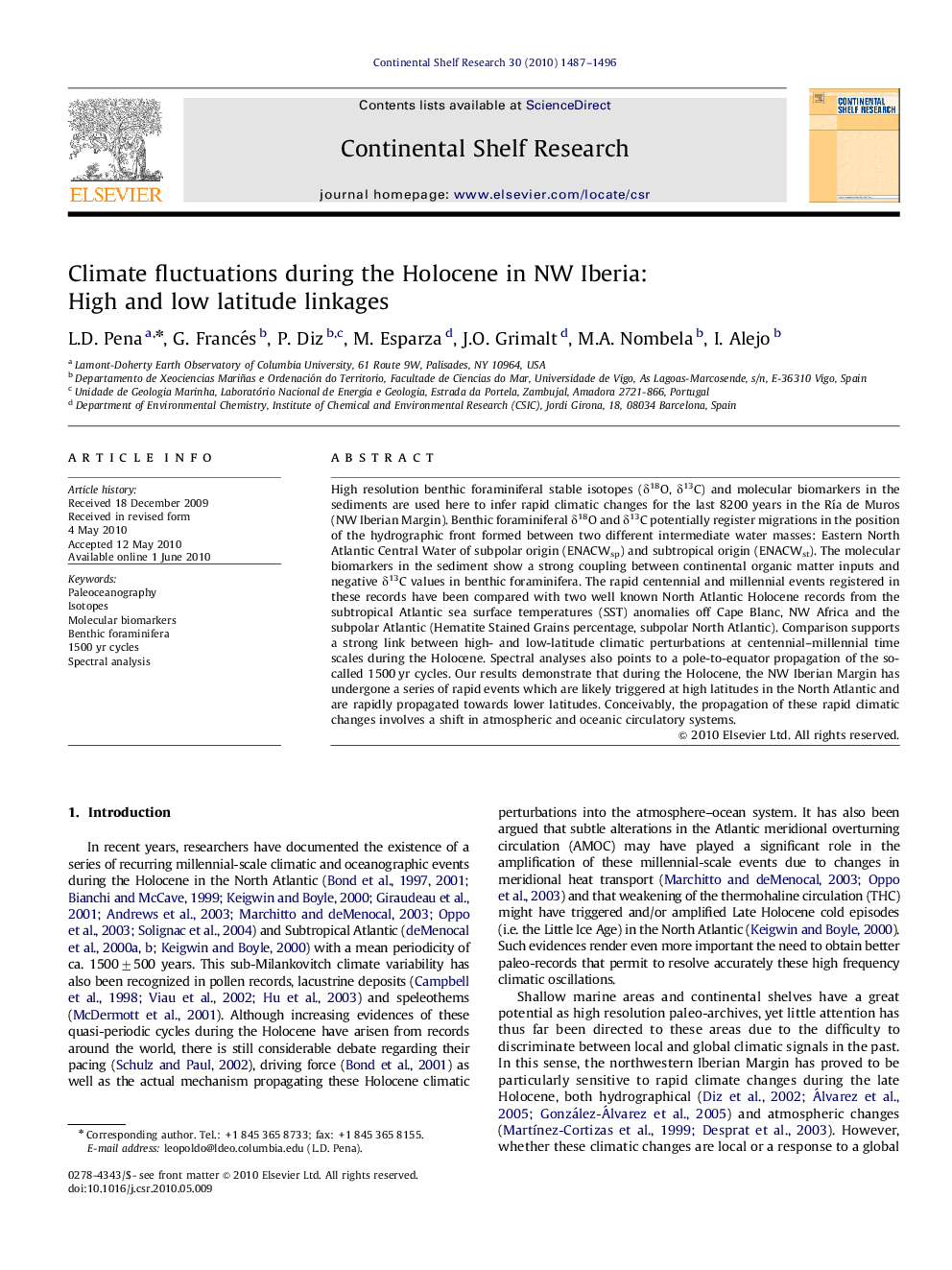| Article ID | Journal | Published Year | Pages | File Type |
|---|---|---|---|---|
| 4532870 | Continental Shelf Research | 2010 | 10 Pages |
High resolution benthic foraminiferal stable isotopes (δ18O, δ13C) and molecular biomarkers in the sediments are used here to infer rapid climatic changes for the last 8200 years in the Ría de Muros (NW Iberian Margin). Benthic foraminiferal δ18O and δ13C potentially register migrations in the position of the hydrographic front formed between two different intermediate water masses: Eastern North Atlantic Central Water of subpolar origin (ENACWsp) and subtropical origin (ENACWst). The molecular biomarkers in the sediment show a strong coupling between continental organic matter inputs and negative δ13C values in benthic foraminifera. The rapid centennial and millennial events registered in these records have been compared with two well known North Atlantic Holocene records from the subtropical Atlantic sea surface temperatures (SST) anomalies off Cape Blanc, NW Africa and the subpolar Atlantic (Hematite Stained Grains percentage, subpolar North Atlantic). Comparison supports a strong link between high- and low-latitude climatic perturbations at centennial–millennial time scales during the Holocene. Spectral analyses also points to a pole-to-equator propagation of the so-called 1500 yr cycles. Our results demonstrate that during the Holocene, the NW Iberian Margin has undergone a series of rapid events which are likely triggered at high latitudes in the North Atlantic and are rapidly propagated towards lower latitudes. Conceivably, the propagation of these rapid climatic changes involves a shift in atmospheric and oceanic circulatory systems.
